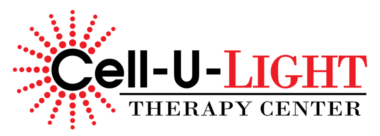[1]. PMID: 24656472 DOI: 10.1016/j.dental.2014.02.006 Dent Mater 2014 May;30(5):465-75. doi: 10.1016/j.dental.2014.02.006. Epub 2014 Mar 21.
[2] PMID: 24286286 PMCID: PMC3926176 DOI: 10.1089/pho.2013.3616 Photomed Laser Surg 2014 Feb;32(2):93-100. doi: 10.1089/pho.2013.3616. Epub 2013 Nov 28.
[3]. PMID: 16414908 DOI: 10.1080/14764170500370059 J Cosmet Laser Ther 2005 Dec;7(3-4):196-200. doi: 10.1080/14764170500370059.
[4] PMID: 18425909 PMCID: PMC9044120 DOI: 10.1002/14651858.CD005107.pub4 Cochrane Database Syst Rev 2008 Apr 16;2008(2):CD005107. doi: 10.1002/14651858.CD005107.pub4.
[5] PMCID: PMC5523874 NIHMSID: NIHMS879874 PMID: 28748217 HHS Author Manuscripts PMC5523874 2017 May 19. doi: 10.3934/biophy.2017.3.337
[6] PMID: 25122099 DOI: 10.1097/PHM.0000000000000158 Am J Phys Med Rehabil. 2014 Dec;93(12):1073-85. doi: 10.1097/PHM.0000000000000158.
[7] PMCID: PMC3288797 NIHMSID: NIHMS339992 PMID: 22045511 Ann Biomed Eng. Author manuscript; available in PMC 2013 Feb 1.Published in final edited form as: Ann Biomed Eng. 2012 Feb; 40(2): 516–533. Published online 2011 Nov 2. doi: 10.1007/s10439-011-0454-7
[8] Madison Hennessy 1 , Michael R Hamblin 2 3 4 Affiliations PMID: 28580093 PMCID: PMC5448311 DOI: 10.1088/2040-8986/19/1/013003
[9] Margaret A Naeser 1 , Anita Saltmarche, Maxine H Krengel, Michael R Hamblin, Jeffrey A Knight Affiliations PMID: 21182447 PMCID: PMC3104287 DOI: 10.1089/pho.2010.2814
[10] Marvin H Berman 1 , James P Halper 1 , Trent W Nichols 2 , H Jarrett 2 , Alan Lundy 2 , Jason H Huang 3 Affiliations PMID: 28593105 PMCID: PMC5459322 DOI: 10.21767/2171-6625.1000176
[11] Eshaghi E, Sadigh-Eteghad S, et al. Transcranial photobiomodulation prevents anxiety and depression via changing serotonin and nitric oxide levels in brain of depression model mice: A study of three different doses of 810 nm laser. Lasers in Surgery and Medicine. 2019 September.
[12] Salehpour F, Farajdokht F, et al. Near-infrared photobiomodulation combined with coenzyme Q10 for depression in a mouse model of restraint stress: reduction in oxidative stress, neuroinflammation, and apoptosis. Brain Research Bulletin. 2019 January.
[13] Salehpour F, Rasta SH, et al. Therapeutic effects of 10-HzPulsed wave lasers in rat depression model: A comparison between near-infrared and red wavelengths. Lasers in Surgery and Medicine. 2016 September.
[14] Morita T., Tokura H. “Effects of lights of different color temperature on the nocturnal changes in core temperature and melatonin in humans” Journal of Physiological Anthropology. 1996 September.
Additional References
Nutt1D, Wilson S, et al. Sleep disorders as core symptoms of depression. Dialogues in Clinical Neuroscience. 2008 September.
Vadnie C, and McClung C. Circadian Rhythm Disturbances in Mood Disorders: Insights into the Role of the Suprachiasmatic Nucleus. Neural Plasticity. 2017 November.
McClung C. How might circadian rhythms control mood? Let me count the ways. Biological Psychiatry. 2013 April.
The effect of red-to-near-infrared (R/NIR) irradiation on inflammatory processes
Tomasz Walski 1 2 , Krystyna Dąbrowska 1 3 , Anna Drohomirecka 4 , Natalia Jędruchniewicz 1 , Natalia Trochanowska-Pauk 1 2 , Wojciech Witkiewicz 1 , Małgorzata Komorowska 1 2
Affiliations PMID: 31170016 DOI: 10.1080/09553002.2019.1625464
Mechanisms and applications of the anti-inflammatory effects of photobiomodulation
Michael R Hamblin 1 2 3 Affiliations PMID: 28748217 PMCID: PMC5523874 DOI: 10.3934/biophy.2017.3.337
Mechanisms and Mitochondrial Redox Signaling in Photobiomodulation
Michael R Hamblin 1 2 3 Affiliations PMID: 29164625 PMCID: PMC5844808 DOI: 10.1111/php.12864
Transcranial and systemic photobiomodulation for major depressive disorder: A systematic review of efficacy, tolerability and biological mechanisms
Marco A Caldieraro 1 , Paolo Cassano 2 Affiliations PMID: 30248638 DOI: 10.1016/j.jad.2018.09.048
[15] Novel Approach to Treating Androgenetic Alopecia in Females With Photobiomodulation (Low-Level Laser Therapy)
Shelly Friedman 1 , Patricia Schnoor Affiliations PMID: 28328705 DOI: 10.1097/DSS.0000000000001114
[16] Low-Level Laser Therapy for Fat Layer Reduction: A Comprehensive Review
Pinar Avci, MD,1,2,3 Theodore T. Nyame, MD,4 Gaurav K. Gupta, MD, PhD,1,2 Magesh Sadasivam, MTech,1 and Michael R. Hamblin1,2,5,*
[17] New treatment of cellulite with infrared-LED illumination applied during high-intensity treadmill training
Fernanda Rossi Paolillo 1 , Audrey Borghi-Silva, Nivaldo Antonio Parizotto, Cristina Kurachi, Vanderlei Salvador Bagnato
Affiliations PMID: 21740089 DOI: 10.3109/14764172.2011.594065
[18] A Controlled Trial to Determine the Efficacy of Red and Near-Infrared Light Treatment in Patient Satisfaction, Reduction of Fine Lines, Wrinkles, Skin Roughness, and Intradermal Collagen Density Increase
Alexander Wunsch1 and Karsten Matuschka2
Photomed Laser Surg. 2014 Feb 1; 32(2): 93–100. doi: 10.1089/pho.2013.3616 PMCID: PMC3926176 PMID: 24286286
[19] Biological Responses of Stem Cells to Photobiomodulation Therapy Khatereh Khorsandi 1 , Reza Hosseinzadeh 2 , Heidi Abrahamse 3 , Reza Fekrazad 4 5 Affiliations PMID: 32013851 DOI: 10.2174/1574888X15666200204123722




